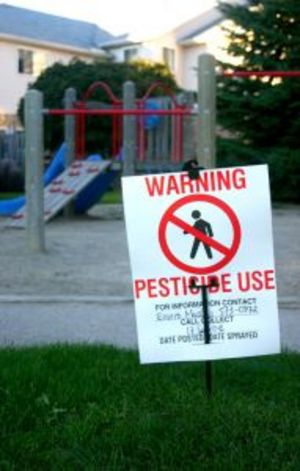It may seem crazy, but everyday you are exposed to thousands of dangerous chemicals and toxins. In other words, living and working in your environment may be hazardous to your health. You may not even realize you are being exposed to chemicals that could be potentially harmful, ones that can make you sick, and others that have been linked to various diseases. Everyday doctors are discovering new links between the environments we work and live in and the onset of illness or disease. But, how do you minimize your risk, especially when you can’t even see or smell the toxins?
In every environment there are amounts of potentially harmful toxins, and yes some environments have more than others, increasing your risk of becoming ill. Many of these toxins include solvents, additives, pesticides, chlorine, fluoride, mercury, and other biohazards that have been directly linked to Cancer, Diabetes, Parkinson’s, Asthma, and Neurological Disorders among many other diseases.
You can minimize your risk of exposure to these dangerous toxins by being smart. You can smarten up by reading labels, avoiding poisons, and by following these suggestions.
Toxins in the Social Environment
Exposure to harmful toxins and chemicals is more likely to occur in the social environment. This is because there are so many contributing factors. From air pollution to ground water contamination there are many ways you can come in contact with possibly dangerous chemicals. But there’s no need to go overboard; just start small and work your way up. The first thing you can do to limit your exposure is to drive with your car windows up, especially in heavy traffic. When you drive with the windows down you are allowing any toxin in the environment to enter your car, and your airspace. Always remember that if you can smell it, you are ingesting it. On the road this includes gas fumes, carbon monoxide, diesel exhaust, tar odors, fertilizer, and whatever else is out there on the road. You should really avoid breathing these fumes in.
Next, do not smoke. Do not allow others to smoke near you, and if you do smoke don’t smoke in the car. Have you ever gotten into a smokers vehicle? Usually it reeks so bad of cigarettes you want to hold your head out the window. If you can smell it, you are ingesting it. Smoking in a car traps the smoke in a confined area and increases your exposure to harmful toxins. In several states laws have been passed that make it illegal to smoke within 50 feet of a public building. If this is the law in your state you can ask a smoker to take a hike. If the law is not followed the business and the smoker can be fined.
Part of the social environment also includes work, school, church, shopping, and other public areas. Many towns and cities across the United States use pesticides in these areas. Pesticides are not only dangerous to humans and animals but can cause ground water contamination, skin, eye, and upper respiratory irritations. Pesticides are also sprayed on produce sold in commercial grocery stores which can cause additional problems for the very young or very old, and mothers who are pregnant or nursing. You can limit your exposure to pesticides by purchasing Organic or pesticide free produce. Limiting your exposure in other areas may be difficult because often the public is not very well informed of spraying dates and times. You can find out this information by calling your local town supervisor’s office.
Often, you may be able to petition municipality use of pesticides in your environment. Don’t just be complacent, be active and fight for what’s right. It is not okay for the government to contaminate our environment with potentially harmful toxins and chemicals.
Also, urge your employer to use natural or organic cleaning agents in and around the workplace. There are hundreds of chemicals found in cleaning products, many of which have been directly linked to cancer. Chlorine Bleach is one chemical that has been directly linked to the onset of cancer. If you work in an industry that requires you to deal with harmful toxins, just be smart and use protection. If protections such as eyewear, gloves, or aprons are not provided for you, demand them or bring your own.
Minimizing Your Risk at the Doctors Office
This, for most people would seem like the most unlikely place to come in contact with harsh chemicals and toxins. But it is quite untrue. Because of the nature of many of today’s diagnostic tests you are more likely to be exposed to radiation. Radiation exposure results mostly from X-Rays and Mammograms, but can also be a problem at the dentists office too with the use of facial X-Rays. Before getting any kind of X-Ray find out if you really need it or if it can wait. There may even be another test for finding what you are looking for; just ask your doctor. Many doctors will push getting an X-Ray because it puts more money in their pocket but you should insist on other diagnoses.
A Mammogram seems to be the best way to find cancer early but you are still being exposed to radiation, and in a very sensitive area. If you must get an X-Ray or Mammogram choose a facility that does lots of them. Make sure the equipment is routinely checked and monitoring standards are closely followed by the staff. Radiation equipment can be dangerous if used improperly.
Eliminating Toxins in the Home
The easiest way to reduce contamination in the home is to not bring in harmful substances. Don’t bring poisons into your home. This includes aerosol cans, pesticides, chemical agents, solvents, and adhesives. Seventh Generation makes a full line of home cleaning products that not only work well, but are safe to use around children and pets, and are biodegradable. There are lots of other brands to choose as well, but just read the label first and make sure it says biodegradable. If there is any sort of warning label on the container do not buy it.
Just as with the car, you should not smoke in your home, and for the same reasons. Another way to limit your exposure to toxins in the home is to install a working ventilation system for the kitchens and bathrooms. Grease and moisture can wreak havoc on your home and can cause all kinds of mysterious illnesses. Installing the proper ventilation will reduce the risk of becoming ill. Also, it is beneficial to have your water tested and get a good water filtration system.
Your local municipality may test your water for free or relatively cheap but you may not get the most accurate results. You will get much better results if you choose a private lab. Make sure your water is tested for abnormal amounts of chlorine, aluminum, gasoline additives, pesticides, mercury, and fluoride at least. A private lab should run a full scan on your water to determine everything that is in it. If you have a water problem installing a quality home filtration system may be the best choice for you. You will notice the difference when you take showers, wash laundry, and even the taste of your water will improve.
Minimizing Toxins and Chemicals in Your Diet
As before said, the first step you can take to eliminate toxins is to purchase organic produce. There are also thousands of natural and organic products available for purchase, many located right at your favorite grocery store. We’ve all heard fish is great for nutrition and if you haven’t you just did. Fish provides essential fatty acids and omega. But, beware of buying locally caught or farmed fish because often they are loaded with toxins. One of the most harmful is mercury and it is found in most fish caught in the United States. Mercury can cause neurological problems and other complications. Choose salmon, wild or raised, or any other fish that is not domestic to the United States to lower your exposure to toxins.
Next, do not use the microwave. Microwaves may cause frontal lobe damage in the brain and they physically alter the structure of food. If you look at a piece of fresh cut fruit, like an apple, under a microscope you will see the regular pattern of smooth molecules. Now, put that same piece of fruit in the microwave for 15 seconds and reexamine it under a microscope. You will see the molecules in the fruit are now jagged and damaged, instead of smooth. This has got to be saying something about microwaves, and it isn’t good. Also, by using the microwave you are allowing chemicals to seep into your food. Cook smaller portions to avoid reheating food, and if you must reheat and eat use the stove or oven.
It is best as well to avoid processed and refined foods, carbonated beverages, and canned or dried foods. Many of these foods contain large amounts of sugar, hydrogenated oils, sodium, artificial colors and flavorings, and preservatives that are all bad for your health. I always say “fresh is better than frozen, frozen is better than canned, and canned is always the last resort”.
At this point, it’s not just about what you are putting into your body, but on it as well. Many creams, cosmetics, and other health and beauty products contain ingredients that are not that desirable. Many of these ingredients include harsh chemical strippers that make your skin and hair feel dried out, damaged, itchy, red, or sore. Many cosmetics have labels that read do not use in or around the eye area, do not ingest, call a poison control center. Why would you want to use products that claim right on the label they may be dangerous? As with everything else these days, you have a choice when it come to what you are using on your body.
Many bath products are available as natural or organic and many of them are free of chemicals, artificial colors, and preservatives. Also, many companies that make products of this sort refrain from testing on animals and that makes a lot of us sleep better at night.
When it comes to limiting your exposure to harmful chemicals, toxins, and poisons it pays to pay attention. Read labels, don’t take anything at face value, and always ask questions.




